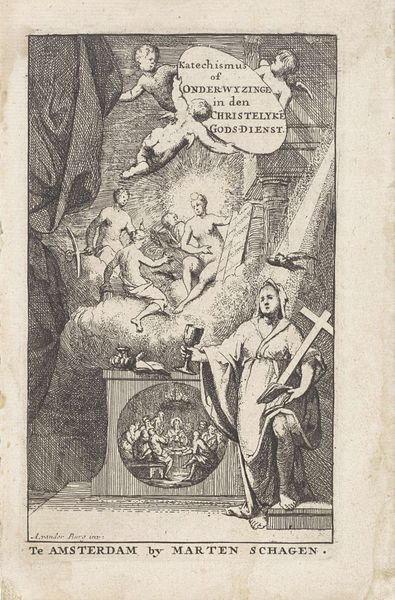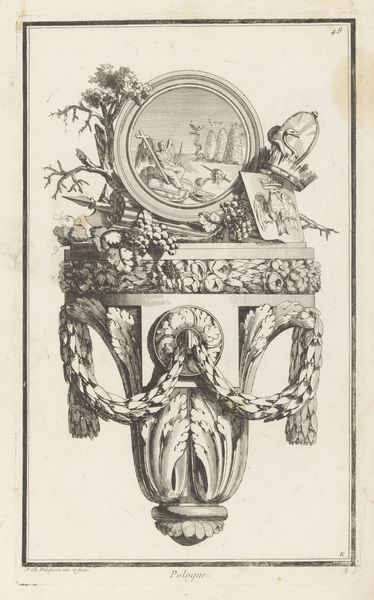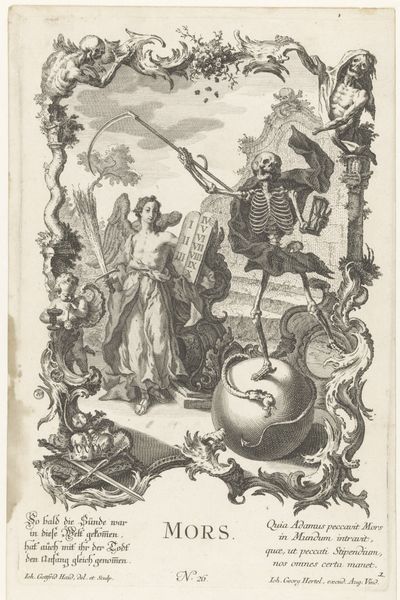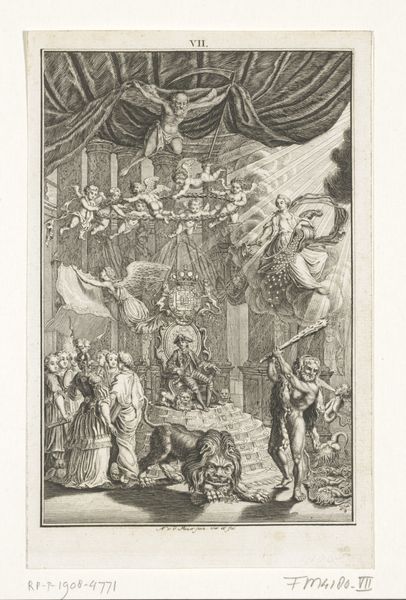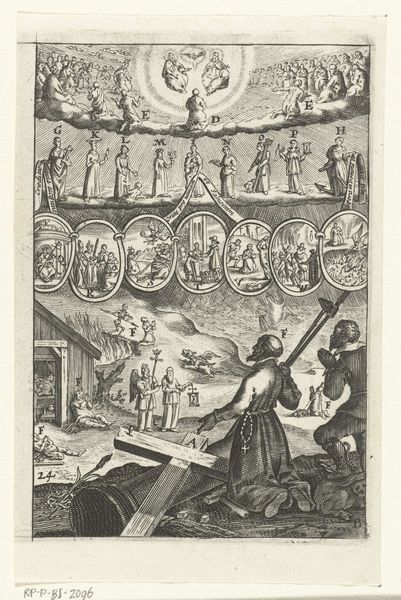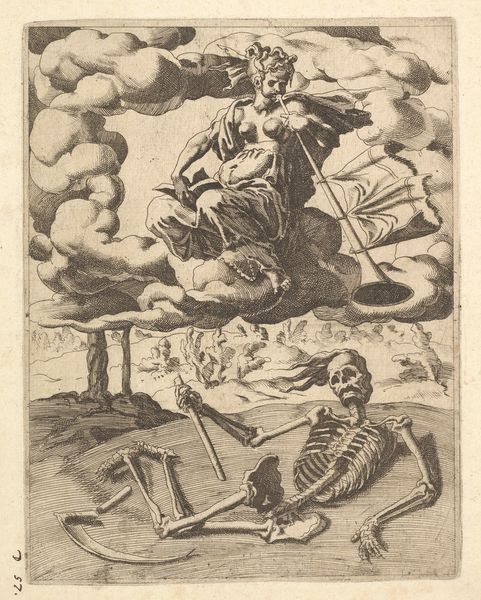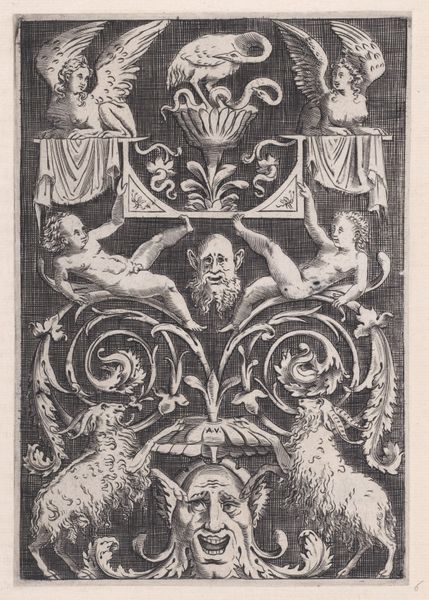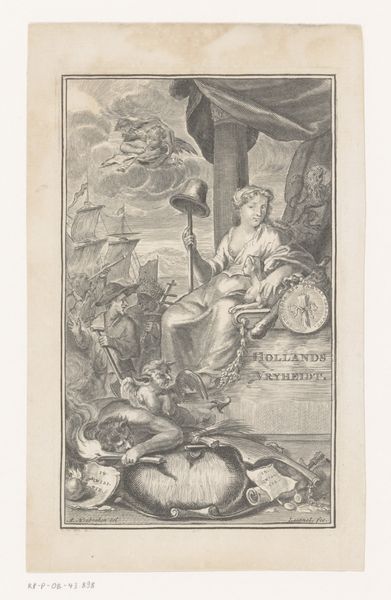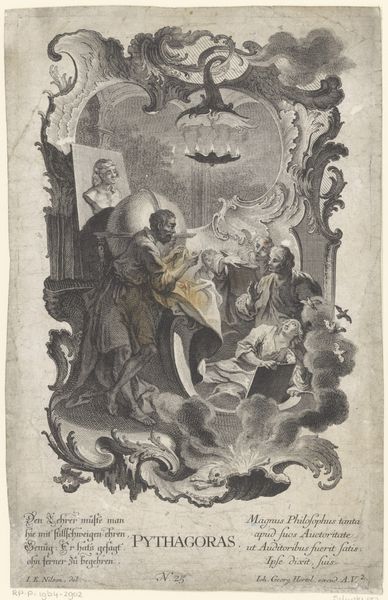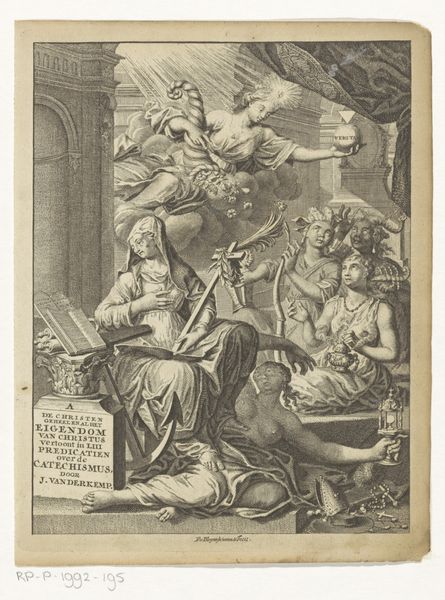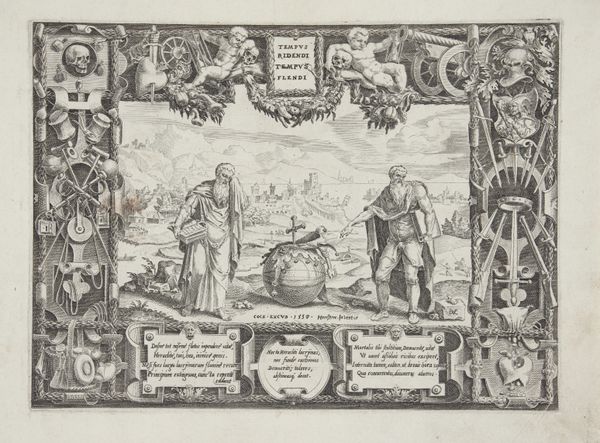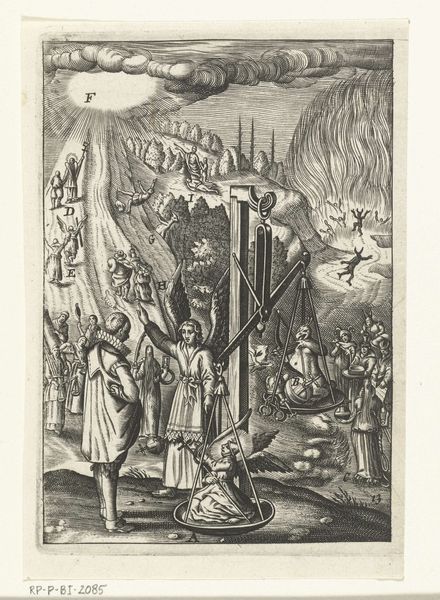
engraving
#
portrait
#
allegory
#
baroque
#
old engraving style
#
momento-mori
#
history-painting
#
engraving
#
miniature
Dimensions: height 129 mm, width 85 mm
Copyright: Rijks Museum: Open Domain
Curator: Looking at this piece, titled "Portret van Abraham a Sancta Clara," an engraving made sometime between 1737 and 1764, one is immediately struck by its allegorical complexity. What are your initial thoughts? Editor: Stark, really. It feels like a rather intense meditation on mortality, given the figures and symbols arrayed around the central portrait. It's got that familiar Baroque tension between life and death. Curator: Indeed. The portrait at the center depicts Abraham a Sancta Clara, a well-known Austrian Catholic preacher and writer. This engraving served as the frontispiece for one of his books, likely reflecting on the themes within. Consider the context—the late Baroque era, the Counter-Reformation’s emphasis on spiritual introspection. Editor: Absolutely. And observe how death is embodied. The skeleton is clearly *memento mori,* nudging the viewer to contemplate life’s brevity. Angels and cherubs add another layer—eternal hope balanced against earthly decay. Then you have the skulls, the extinguished candle. Heavy symbolism. Curator: It’s a careful orchestration. Note how the composition itself reinforces a didactic purpose. The visual rhetoric aimed to impact viewers strongly. It attempts to move the spectator beyond mere observation to something approaching self-reflection. Editor: Yes. And consider how these images have persisted through our collective psyche. Skulls and skeletons are so familiar to us, yet here they possess such gravitas, connected with themes like morality and divine judgement. Curator: Certainly, its visual language transcended the immediate context. Even removed from its original intended function within the book, its imagery retains potency and acts as a conduit into earlier modes of thinking about life, death, and faith. Editor: This piece exemplifies how visual symbolism has shaped culture for centuries. A seemingly simple engraving can unlock so much cultural memory. Curator: Exactly. And in the context of art history, understanding such works reveals much about the socio-religious forces that have historically framed ways to look at human existence. Editor: I come away feeling like this engraving still carries weight, acting as a visual key to understanding baroque anxieties surrounding mortality. Curator: A powerful little engraving that reveals to us the cultural richness of the era, offering reflections on social values in pictorial format.
Comments
No comments
Be the first to comment and join the conversation on the ultimate creative platform.
